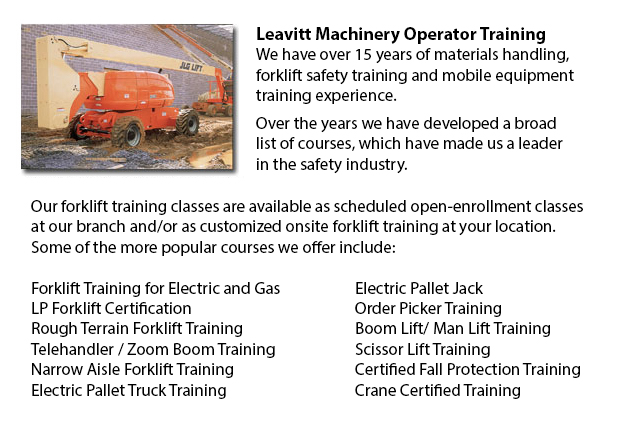
Aerial Boom Lift Ticket Kamloops - Aerial lift trucks can accommodate numerous tasks involving high and tough reaching places. Usually utilized to complete routine repair in buildings with lofty ceilings, trim tree branches, hoist heavy shelving units or patch up phone lines. A ladder could also be utilized for some of the aforementioned jobs, although aerial hoists offer more security and strength when properly used.
There are several versions of aerial hoists existing on the market depending on what the task required involves. Painters sometimes use scissor aerial jacks for instance, which are grouped as mobile scaffolding, handy in painting trim and reaching the 2nd story and above on buildings. The scissor aerial platform lifts use criss-cross braces to stretch out and lengthen upwards. There is a platform attached to the top of the braces that rises simultaneously as the criss-cross braces lift.
Bucket trucks and cherry pickers are a different type of aerial lift. They possess a bucket platform on top of an elongated arm. As this arm unfolds, the attached platform rises. Platform lifts utilize a pronged arm that rises upwards as the handle is moved. Boom hoists have a hydraulic arm which extends outward and hoists the platform. All of these aerial hoists have need of special training to operate.
Training courses offered through Occupational Safety & Health Association, acknowledged also as OSHA, deal with safety steps, system operation, repair and inspection and device cargo capacities. Successful completion of these education programs earns a special certified certificate. Only properly certified individuals who have OSHA operating licenses should run aerial hoists. The Occupational Safety & Health Organization has established rules to maintain safety and prevent injury while utilizing aerial lift trucks. Common sense rules such as not using this apparatus to give rides and ensuring all tires on aerial lifts are braced in order to hinder machine tipping are referred to within the rules.
Unfortunately, figures reveal that more than 20 aerial lift operators pass away each year when operating and nearly ten percent of those are commercial painters. The majority of these accidents were caused by improper tie bracing, hence many of these might have been prevented. Operators should ensure that all wheels are locked and braces as a critical safety precaution to stop the instrument from toppling over.
Marking the surrounding area with obvious markers need to be utilized to safeguard would-be passers-by so they do not come near the lift. Additionally, markings must be placed at about 10 feet of clearance between any utility lines and the aerial lift. Hoist operators must at all times be well harnessed to the hoist when up in the air.
-
Forklift Training Course Kamloops
Forklift Training Course Kamloops - CSA and OSHA establish criteria for forklift safety training that meets current standards and regulations. Anybody planning to use a forklift is needed to successfully complete safety training prior to utilizing an... More -
Forklift Training Program Kamloops
Forklift Training Program Kamloops - The forklift is a common powered industrial vehicle which is in wide use these days. They are occasionally called lift trucks, jitneys or hi los. A departments store will use the forklift in order to unload and lo... More -
Aerial Lift Training Kamloops
Aerial Lift Training Kamloops - The mechanized access platform known as an aerial work platform is a machinery which provides access to places that are otherwise inaccessible to people and other machine. Likewise called an elevating work platform or... More -
Forklift Training School Kamloops
Forklift Training School Kamloops - Forklift Training School - CSA and OSHA establish criteria for forklift safety training which meets existing standards and regulations. Anybody planning to use a forklift is needed to successfully complete safety t... More -
Heavy Equipment Training Courses Kamloops
Heavy Equipment Training Courses Kamloops - When choosing a heavy equipment operator course, the initial step must be to determine the capacity in which you would be working with heavy machines. You could find the correct course to teach you how to o... More -
Heavy Equipment Training School Kamloops
Heavy Equipment Training School Kamloops - HEO or also known as the heavy equipment operator courses would provide you with the skills and knowledge required in order to enter the workforce as an entry level heavy machine operator. In this 12 week co... More -
Telehandler Operator Training Kamloops
Telehandler Operator Training Kamloops - Telescopic handler Forklifts or telehandler forklifts are common industrial equipment found in numerous construction industry environment. The telehandler is a helpful machinery and makes for a valuable tool w... More -
Telehandler License Kamloops
Telehandler License Kamloops - A telehandler or telescopic handler is a machine which is frequently utilized in agricultural and industrial applications. It has a similar appearance to a forklift and even works in a similar manner, though, the teleha... More

Forklift Training Kamloops
TOLL FREE: 1-888-254-6157
Kamloops, British Columbia
forklifttrainingkamloops.com
Email Us
About Us


